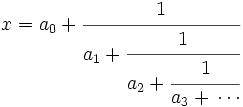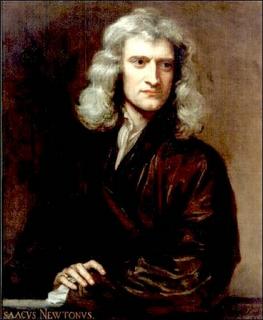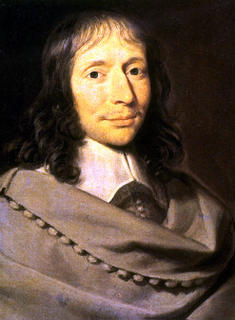For those who would like to start at the beginning of this proof, start here.
The proof presented is based on two books: Harold M. Edward's Fermat's Last Theorem: A Genetic Introduction and Paulo Ribenboim's Fermat's Last Theorem for Amateurs.
Lemma: There are no integers x,y,z such that x5 + y5 = z5, xyz ≠ 0, gcd(x,y,z)=1, x,y are odd, z is even, and 5 divides z.
(1) Assume that x,y,z exist.
(2) We know that there exists m,n,z' such that:
z = 2m5nz' with m ≥ 1, n ≥ 1, [Since 5 divides z and z is even]
gcd(z',2)=1, gcd(z',5)=1. [Since we can make m and n high enough to cover all 2's and 5's]
and 25m55nz'5 = x5 + y5 [Since z=2m5nz', z5 = 25m55nz'5]
(3) There exist two integers p,q that have the following properties:
gcd(p,q)=1since:
p,q have different parities (one is odd, one is even)
25m55nz'5 = 2p(p4 + 10p2q2 + 5q4)
p,q ≠ 0
(a) x,y are odd → x+y is even, x - y is even
Since odd + odd = even and odd - odd = even.
[We know that x,y are odd since gcd(x,y,z)=1 and z is even]
(b) From this, we know that there are two values p,q such that:
x + y = 2p
x - y = 2q
(c) We also know that gcd(p,q)=1 since:
x = (1/2)[x + y + x - y] = (1/2)(2x) = (1/2)[2p + 2q] = p + q
y = (1/2)[x + y - (x - y)] = (1/2)(2y) = (1/2)[2p - 2q] = p - q
If there exists a value d greater than 1 that divides both p,q then, from above, it would divide both x,y which is impossible since gcd(x,y)=1 from step (#1).
(d) From step 3(c) above, we can conclude that p,q have different parities (that is, one is odd and the other is even).
p,q can't both have even parity because then x would be even by step 3(c) above since even + even = even but x is odd by step 3(a) above.
p,q can't both have odd parity for the same reason since odd + odd = even.
Therefore, p,q must have different parities where one is odd and one is even since odd + even = odd.
(e) Applying p,q to step (#2) above gives us:
25m55nz'5 = x5 + y5 = (p+q)5 + (p-q)5 = 2p(p4 + 10p2q2 + 5q4) [See Lemma 1, here]
(f) p,q ≠ 0 since gcd(x,y)=1. [If x+y=0 or (x-y)=0, then x=y or x=-y which is not possible.]
(4) There exists an integer r that has these properties:
p=5rsince:
gcd(q,r)=1
q,r have different parities (one is odd, one is even)
25m55nz'5 = 2*52r(q4 + 50q2 r2 + 125r4)
5 divides r
r ≠ 0
(a) 5 divides p since:
From step (#3e) and Euclid's Generalized Lemma, 5 divides 2p or 5 divides p4 + 10p2q2 + 5q4. If it divides 2p, then it divides p. Likewise, if 5 divides p4 + 10p2q2 + 5q4 then it must also divide p. [Details if needed are here] Either way, it divides p.
(b) From (a), we know that there must exist r such that:
p = 5r
(c) gcd(r,q)=1 since gcd(p,q)=1 from step (#3c).
(d) We know r,q have different parities since r has the same parity as p since:
odd divided by 5 = odd
even divided by 5 = even
p,q have different parities (from step #3d)
(e) Finally, we note that applying r to step #3e gives us:
2p(p4 + 10p2q2 + 5q4)=
2(5r)[(5r)4 + 10(5r)2q2 + 5q4] =
2*5r*5(125r4 + 50r2q2 + q4) =
2*52r(q4 + 50q2 r2 + 125r4)
(f) 5 divides r since:
We know that 55n divides 2 * 52r(q4 + 50q2r2 + 125r4) from step (#3e and #4e).
So that 55n-2 divides 2 * r(q4 + 50q2r2 + 125r4)
Since n ≥ 1 (step #2 above), 5n ≥ 5 which means 5n is greater than 2 so that we know that:
5 divides 2 * r(q4 + 50q2r2 + 125r4)
Now, we know that 5 doesn't divide q (since 5 divides p and gcd(p,q)=1 ) so that 5 cannot divide q4 + 50q2r2 + 125r4.
By Euclid's Generalized Lemma, since 5 divides 2 * r, it must divide r.
(g) r ≠ 0 since p ≠ 0 from step #3f.
(5) We define three values a,b,t to be the following:
(a) Let t = q4 + 50q2 r2 + 125r4
(b) Let a = q2 + 25r2
(c) Let b = 10r2
(d) And we note that t = a2 - 5b2. [By Lemma 2, here]
(6) Now, we note that a,b have the following properties:
(a) gcd(a,b)=1 since:
Assume gcd(a,b) is greater than 1.
Then, there is a prime f that divides both a and b.
Since f divides a, we know that f divides 10r2 which by Euclid's Generalized Lemma, gives us three possible cases:
Case I: f divides 2 (in this case, f = 2)
Case II: f divides 5 (in this case, f = 5)
Case III: f divides r (since f divides r2 implies f divides r or f divides r.)
Case I is false: because a is odd. a must be odd because q,r have different parities (step #4d) and since (odd)2 + 25(even)2 = odd + even = odd and (even)2 + 25(odd)2 = even + odd = odd.
Case II is false: f can't be 5 since 5 divides p and gcd(p,q)=1. This means 5 doesn't divide q and therefore 5 doesn't divide q2 + 25r2.
Case III is false: If f divides r and f divides a, then f would divide q (since a= q2 + 25r2 and see here) but this cannot be the case since gcd(r,q)=1.
Since all cases are false, no such prime can exist.
(b) 5 doesn't divide a, 5 divides b
From step #5c we know that 5 divides b. From (a), we know that gcd(a,b)=1 so 5 can't divide a.
(c) a,b have different parities
b is even from #5c so that 2 divides b. But 2 cannot divide a since gcd(a,b)=1.
(d) gcd(2*52r,t) = 1 since:
Assume there exists a prime f that divides both 2*52r and t.
We know that f ≠ 2 since t is odd since:
t = (q2 + 25r2)2 - 5(10r2)2.
q,r have different parity (#4d)
Case I: q is odd, r is even
(odd2 + 25(even)2)2 - 5(10(even)2)2 = (odd + 25(even))2 - 5(even)2 =
= (odd + even)2 - even = odd2 - even = odd
So, if q is odd, r is even, then t is odd.
Case II: q is even, r is odd
(even2 + 25(odd)2)2 - 5(10(odd)2)2 = (even + odd)2 - 5(even)2 =
odd2 - even = odd.
So, if q is even, r is odd, then t is odd.
Either way, t is odd.
We know that f ≠ 5 since t is not divisible by 5 since 5 doesn't divide q (#6a) [Additional details if needed are here]
Finally, f cannot divide r since gcd(r,t)=1 since:
Assume there exists a prime p' that divides both t,r
p' would then divide q [Additional details if needed are here]
But this is impossible since gcd(q,r)=1 from (#4c).
Therefore, the prime p' doesn't exist and we can conclude that f does not divide r.
(e) t=a - 5b2 is a fifth power since:
Since z5 = (2*52r)*(t) from step (#4e) above and since (2*52r) and (t) are relatively prime from step (# 6d) above, we can conclude that:
t is a fifth power and (2*52r) is a fifth power [From Relatively Prime Divisors of n-powers]
(f) a,b are positive integers
We know this since q,r are nonzero integers (#3f,#4g) and #5 (since the square of a nonzero integer is a positive integer).
(7) With the properties in step #6, we can use a lemma (see Lemma 1, here):
There exists two integers c,d such that:
a = c(c4 + 50c2d2 + 125d4)
b = 5d(c4 + 10c2d2 + 5d4)
gcd(c,d)=1
c,d have different parities
5 doesn't divide c
5 divides d
c,d are nonzero
(8) Let u' = c + 5d2, v' = 2d2
(9) We note that u', v' have the following properties:
(a) gcd(u',v')=1
Assume there is a prime f that divides both c + 5d2, 2d2.
There are three cases that we need to consider:
Case I: f = 2
Case II: f = 5
Case III: f divides both c,d
Case I isn't true because u' = c + 5d2 is odd since c,d have different parities (#8) and in both cases, u' is odd:
(odd) + 5(even)2 = odd + even = odd
(even) + 5(odd)2 = even + odd = odd
Case II isn't true 5 doesn't divide c (#8)
Finally Case III isn't true since gcd(c,d)=1 (#8)
(b) 5 doesn't divide u', 5 divides v'
We know that 5 divides d (#8b) so 5 divides v'=2d2. 5 doesn't divide u' since gcd(u',v')=1 (#8)
(c) u',v' have different parities
v' is even by definition. We showed already that u' is odd (#10a)
(d) u' - 5v'2 is a fifth power since:
c4 + 10c2d2 + 5d4 can be put into the form (c2 + 5d2)2 - 5(2d2)2 since:
(c2 + 5d2)2 = c4 + 10c2d2 + 25d4 [From the Binomial Theorem]
5(2d2)2 = -20d4
Now, (2*52r) is a fifth power (#7e) so (2*52r)2 is a fifth power [since (x5)2 = (x2)5]
(2*52r)2 = 2*53*10r2 = (2*53)*v = (2*53)[5d(c4 + 10c2d2 + 5d4)] =
(2*54d)(c4 + 10c2d2 + 5d4)
So, we next show that gcd( 2*54d ,c4 + 10c2d2 + 5d4 ) = 1
Assume that there is a prime f that divides both. We need handle three cases:
Case I: f = 2
Case II: f=5
Case III: f divides both c,d
Case I is impossible since c4 + 10c2d2 + 5d4 is odd since c,d have different parities (#8) and:
(odd)4 + 10(odd)2(even)2 + 5(even)4 = odd + even + even = odd
(even)4 + 10(even)2(odd)2 + 5(odd)4 = even + even + odd = odd
Case II is impossible since 5 doesn't divide c (#8)
Case III is impossible since gcd(c,d)=1 (#8)
OK, combining these results with Relatively Prime Divisors of n-powers, we can conclude that:
2*54d and c4 + 10c2d2 + 5d4 are 5th powers.
(10) With the properties in step #9, we can use a lemma which I will prove later to show:
c + 5d2 = c'(c'4 + 50c'2d'2 + 125d'4)
2d2 = 5d'(c'4 + 10c'2d'2 + 5d'4)
gcd(c',d')=1
c',d' have different parities
5 doesn't divide c'
5 divides d'
c' , d' ≠ 0
(11) (2*58)(2d2) = 22*58d2 = (2*54d)2
(12) We know that 2*54d is a fifth power from step (#9d) so (2*54d)2 is also a fifth power [Because (x5)2 = (x2)5]
(13) So 2*59d'(c'4 + 10c'2d'2 + 5d'4) is a fifth power by the argument below:
First, we note that (2*58)(2d2) is a fifth power since:
(2*58)(2d2) = (2*54d)2 (from step #11) and (2*54d)2 is a fifth power (from step #12)
But this shows that 2*59d'(c'4 + 10c'2d'2 + 5d'4) is a fifth power since:
2*59d'(c'4 + 10c'2d'2 + 5d'4) = (2*58) * 5d'(c'4 + 10c'2d'2 + 5d'4) = (2*58)(2d2) [from step #10.]
(14) gcd(2*59d' , c'4 + 10c'2d'2 + 5d'4)=1 since:
(a) Assume there is a prime f that divides both 2*59d' and c'4 + 10c'2d'2 + 5d'4.
(b) There are three cases that we need to consider by Euclid's Generalized Lemma:
Case I: f = 2
Case II: f = 5
Case III: f divides d' and c'4 + 10c'2d'2 + 5d'4
(c) We can eliminate Case I since is c'4 + 10c'2d'2 + 5d'4 odd.
c',d' have opposite parity (#10) which means that the value is odd
(even)4 + 10(even)2(odd)2 + 5(odd)4 = even + even + odd = odd
(odd)4 + 10(odd)2(even)2 + 5(even)4 = odd + even + even = odd
(d) We can eliminate Case II since 5 doesn't divide c' which 5 cannot divide c'4 + 10c'2d'2 + 5d'4. [Detail if needed is here]
(e) We can eliminate Case III since gcd(c',d') = 1. [From step (#10)]
(15) So 2*59d' and c'4 + 10c'2d'2 + 5d'4 are also fifth powers. [By (#14) and Relatively Prime Divisors of n-powers]
(16) Step (#15) puts us in the exact same position as Step (#9). This means that using the same argument, we can apply the lemma (see Lemma 1, here) as many times as we would like.
(17) Moreover, d' is greater than 0 and d' is less than d since:
25d'5 ≤ 5d'(c'4 + 10c'2d'2 + 5d'4) = 2d2 [From steps (#10) since c',d' are nonzero and therefore c'2 and d'2 ≥ 1]
We note that 5d'(c'4 + 10c'2d'2 + 5d'4) = 25d'5 + 5d'(c'4 + 10c'2d'2)
Also:
25d'5 ≤ 2d2 → d'5 ≤ (2d2)/25 → d' ≤ 5√(2d*2d)/25
So:
d' is less than d [Since 5√(2d*2d)/25 is less than d as shown below]
5√(2d*2d)/25 is less than d since
(i) Putting both sides to the power of 5 gives us:
(2d2)/25 is less than d5
(ii) Multiplying both sides by 25 gives us:
2d2 is less than 25d5
(iii) Since d ≥ 1 (#7), we know that d2 is less than d5.
(18) If this procedure continued, we eventually get an integer d'' which is less than 1 which is absurd [We only need to repeat this procedure d more times]
QED



































